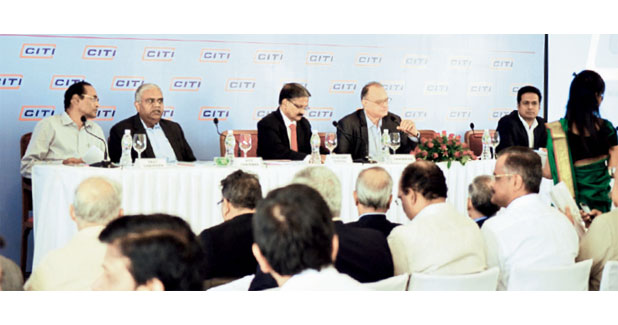
Volatile & declining markets impact Indian textile industry
The 57th AGM of the Confederation of Indian Textile Industry (CITI) held in Mumbai portrayed a dismal picture of the textile industry in India. It was none other than the Chairman, Prem Malik, who painted and highlighted the negative trends that are smothering all the hopes for the textile industry.
The 57th AGM of the Confederation of Indian Textile Industry (CITI) held in Mumbai portrayed a dismal picture of the textile industry in India. It was none other than the Chairman, Prem Malik, who painted and highlighted the negative trends that are smothering all the hopes for the textile industry. Current trends, Budget and the Foreign Trade Policy ? none of these have provided any sign of hope for the Indian textile industry, Malik said.
According to CITI chief: ?We are meeting at a time when the world economy is showing trends of volatility, currencies of developing countries are depreciating and commodity prices are declining in the global markets. Our hope that the global economy had recovered from the slowdown that started in 2008-09 seems to be slightly premature, looking at the current situation of the economy, especially in the Euro Zone and some of the Emerging Markets.?
?Economic growth in India is getting impacted by the developments in the global economy, but we continue to be among the fastest growing major economies of the world and perhaps the fastest among the Emerging Markets. The decline in global oil prices has helped in improving our current account balances and enabled economic reforms to some extent. The gradual implementation of reforms has supported business and investor confidence and encouraged capital inflows. Being an exporter of commodities as well as finished goods with manufacturing industries that are reasonably developed and diversified, India should benefit from important competitiveness gains as a result of rupee depreciation and lower oil prices. However, our export competitiveness continues to be held back by structural bottlenecks, including weak infrastructure, limited openness to trade, and less credit growth. The current Indian economic situation is characterised by modest growth, high inflation, low trade flows, low investment, and high interest rates,? he said.
Said Malik: ?In the case of textiles, demand recession has seriously affected our yarn and fabrics segments both in domestic sales and exports. The slowdown in the Chinese economy has impacted export demand for our yarn, resulting in oversupply in the domestic market. The powerloom sector is facing increased utility and labour costs because of adverse policy interventions at state government level in major production centres and this is also impacting demand for yarns. With these developments, capacity utilisation in both spinning and weaving has taken a hit.?
As per the Index of Industrial Production, textile and clothing sector had a positive growth in fiscal year 2014-15, though the growth declined to 3.6 per cent compared to 9.1 per cent in the previous year. And during April-July 2015-16, the IIP data shows a negative growth of 0.1 per cent for the sector. Among 248 companies whose financial results for 2014-15 could be analysed from BSE data, 122 had poorer results compared to the previous year and 85 had net losses during the year. The present market trends do not show any signs of a recovery at least during the rest of the current fiscal. These negative trends have impacted the investor confidence and slowed down overall investments in the textiles sector.
Malik continued: ?Over one third of our textiles production is for exports and therefore exports have an important role in the overall growth of the industry. It is worrying that the latest trends in exports are not encouraging. In 2014-15 total exports of textiles and clothing were practically flat compared to the previous year, registering a meagre growth of 0.1 percent. Garments registered an impressive growth of 12.2 percent during the year, but the overall growth was pulled down by a significant decline in exports of cotton textiles and handicrafts. There is a marginal improvement this year and exports of textile products during April-August 2015 registered a growth of 2 per cent compared to the same period of last yea




